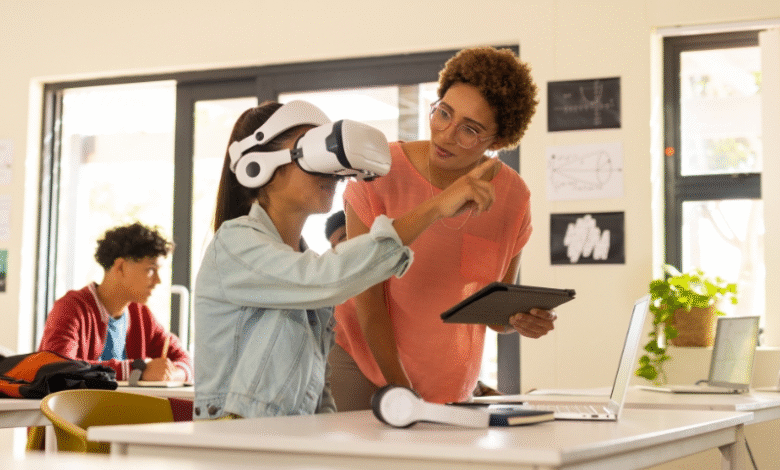How Augmented Reality Is Shaping the Future of Education

Augmented Reality (AR) is emerging as a pivotal force in modern education. By integrating digital elements into physical learning environments, it transforms traditional curricula into dynamic experiences. This innovation not only heightens student engagement but also cultivates critical thinking and collaboration. However, the integration of AR in educational settings is not without its challenges. As schools explore these complexities, the implications for future learning experiences remain compelling and warrant further examination.
The Basics of Augmented Reality in Education
As educators increasingly seek innovative ways to engage students, augmented reality (AR) emerges as a transformative tool in the classroom.
By facilitating virtual simulations, AR creates immersive experiences that transcend traditional learning methods. These experiences foster deeper understanding and retention, allowing students to explore complex concepts in dynamic ways.
AR not only enriches the educational landscape but also empowers learners to pursue knowledge freely and creatively.
Enhancing Engagement Through Interactive Learning
Interactive learning, powered by augmented reality, captivates students’ attention and transforms passive observation into active participation.
By utilizing interactive tools, educators create immersive experiences that foster curiosity and exploration.
This dynamic approach encourages students to engage with content on a deeper level, promoting critical thinking and collaboration.
Ultimately, augmented reality redefines traditional learning paradigms, empowering learners to take control of their educational journeys.
Real-World Applications of AR in the Classroom
Numerous educators around the globe are harnessing augmented reality (AR) to revolutionize classroom experiences and enhance learning outcomes.
Through virtual fieldtrips, students can explore distant locations as if they were physically present, while historical reconstructions allow them to witness events and cultures firsthand.
These applications not only engage learners but also foster a deeper understanding of complex subjects, expanding educational horizons.
See also: How Artificial Intelligence Is Enhancing Personalization in Retail
Challenges and Future Prospects of AR in Education
While the potential of augmented reality (AR) in education is undeniable, several challenges hinder its widespread adoption and effectiveness.
Technical limitations, such as hardware requirements and software compatibility, pose significant barriers.
Furthermore, user adoption remains inconsistent, often influenced by educators’ familiarity and comfort with AR technology.
Addressing these challenges is crucial for realizing AR’s transformative impact on learning experiences in the future.
Conclusion
As augmented reality advances, education is poised for a profound transformation. By blending bold technology with brilliant teaching methods, AR captivates curious minds, creating compelling learning experiences. While challenges like cost and accessibility remain, the promise of immersive innovation is undeniable. This dynamic digital dawn encourages educators to embrace experimentation, ensuring that students not only comprehend complexities but also cultivate creativity. Ultimately, augmented reality is not just shaping the future; it is revolutionizing the realm of education itself.





